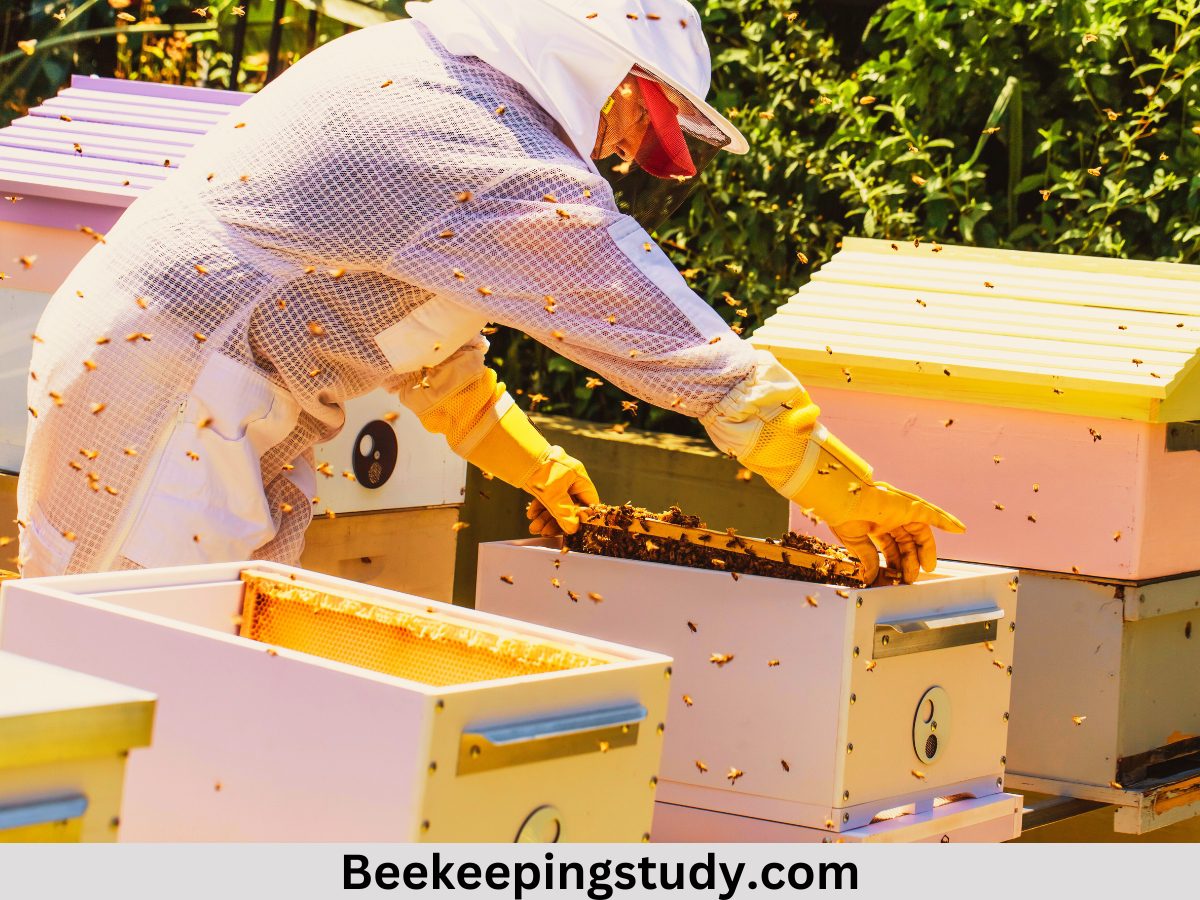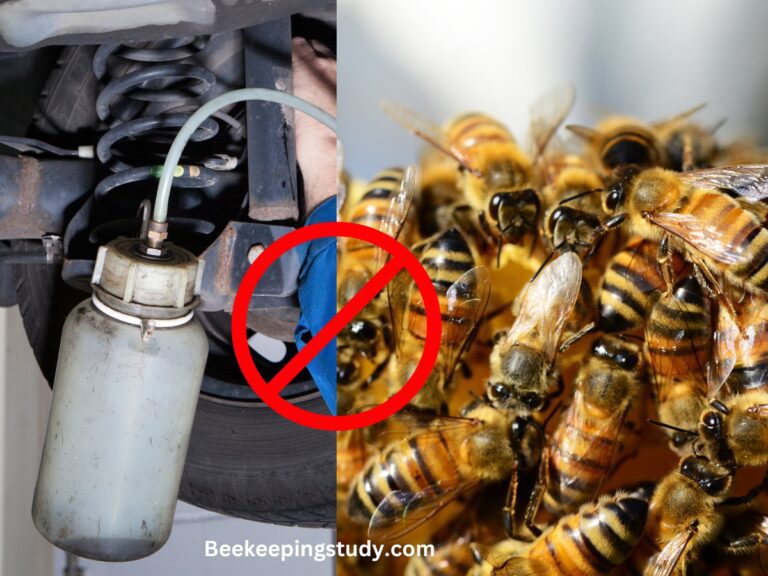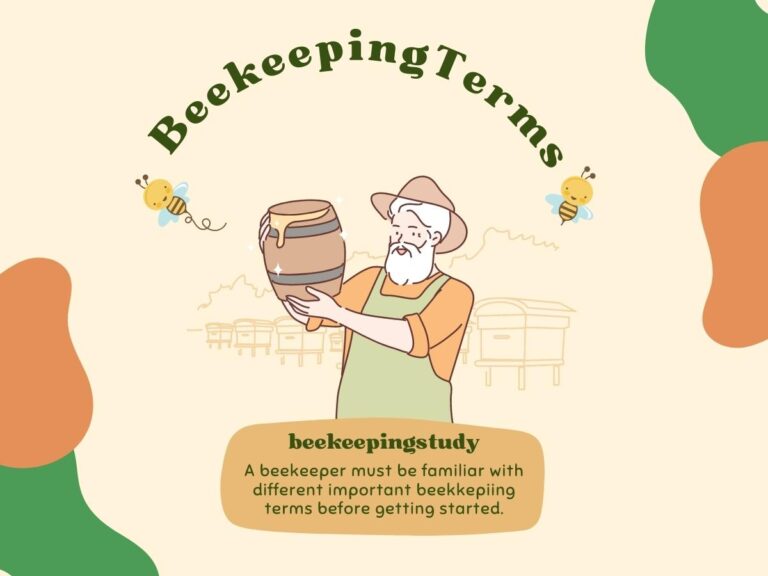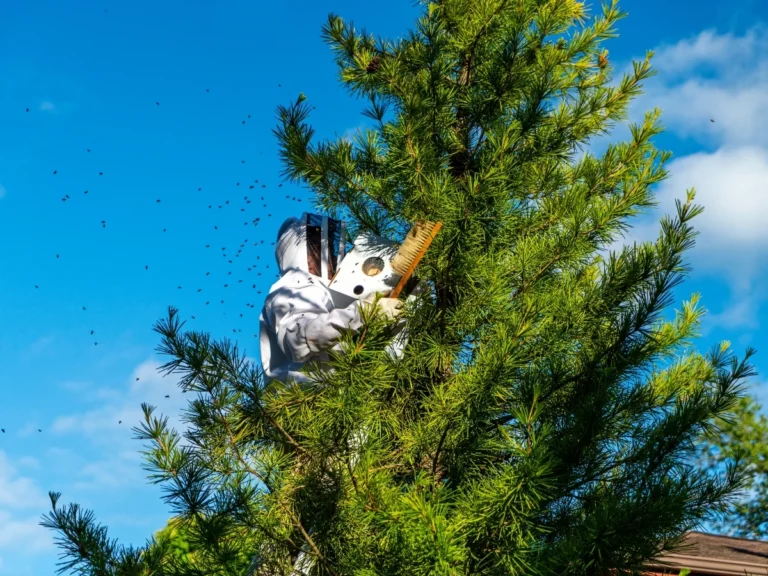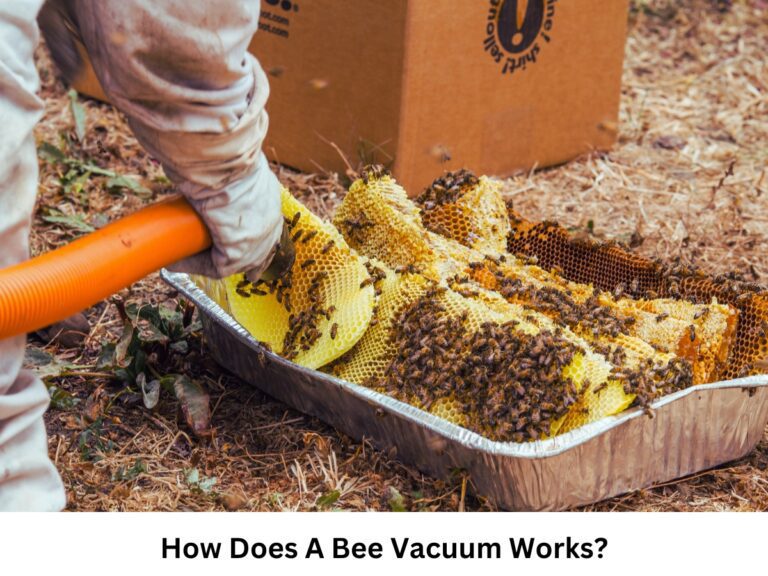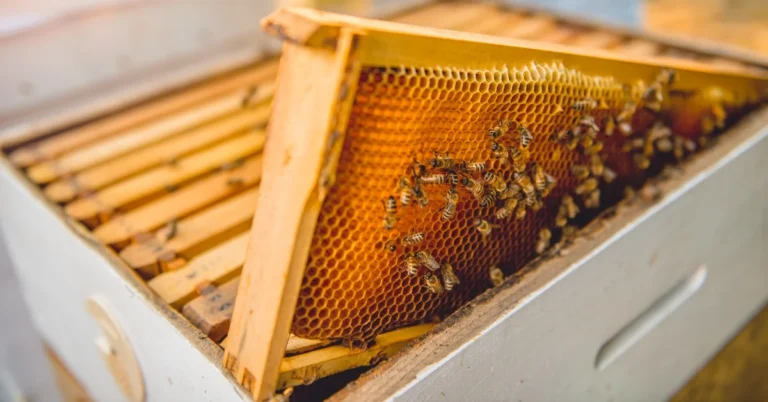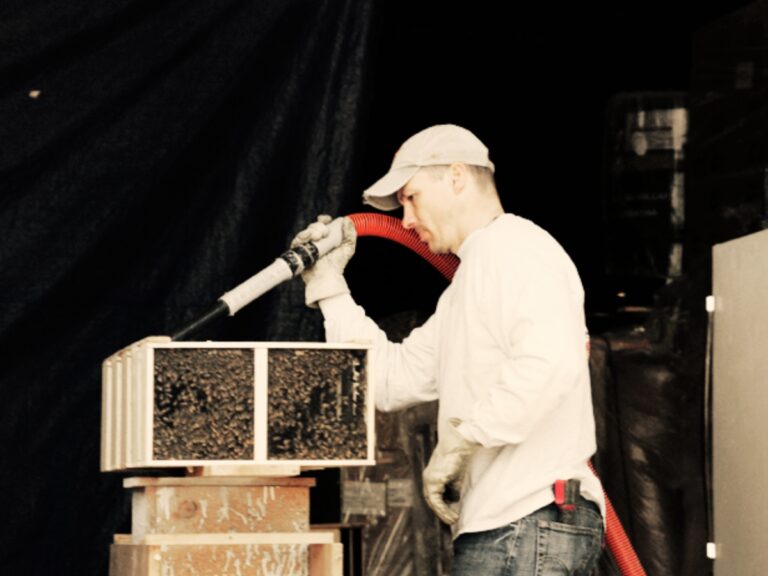Perfect Time To Inspect Beehive In Different Seasons
Selecting the best time to inspect beehive is really crucial. Because bees are very sensitive to environmental and other factors. This is why timing is really important.
If you choose the wrong timing for hive inspection, when bees don’t want to show up, it could be costly. At the beginning of beekeeping, one of the common mistakes is choosing the wrong timing for hive inspection.
I also did the same at the beginning. Due to the wrong timing for hive inspection, bees react negatively. When I was just getting started in beekeeping I was not aware of the timing.
Then I noticed my bees are becoming more aggressive sometimes. Trying to sting me too often and covering my entire suite. This happened usually when I inspect them at the wrong time.
I also noticed bees do not seem to be aggressive during some of the inspections. Those are actually the perfect timing for beehive inspection.
After researching and learning from different beekeeping associations and groups, I learned about the best time to inspect a beehive. Now I know when my bees are in a good mood. So, I can inspect them under such circumstances.
That’s what I am going to discuss with you. This article will provide information about the following things for hive inspection.
- Selecting the best time to inspect beehive.
- Different durations of hive inspection in different seasons.
- How to prepare for your first hive inspection.
When Should You Not Open A Beehive?
Before perfect hive inspection time, you should know the safe hive inspection time. If you can identify the wrong time for hive inspection you will able to determine the safe timings.
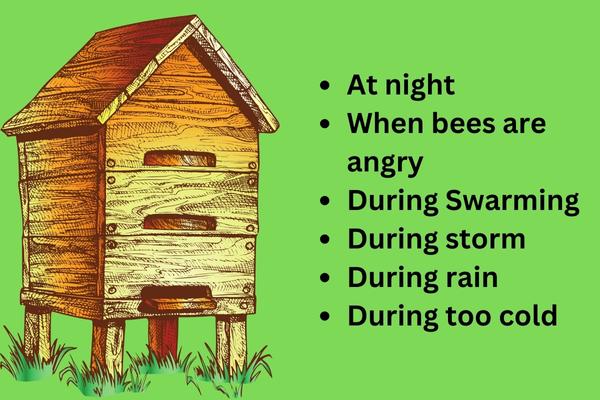
There are so many situations when you shouldn’t open your beehive. The most important of them are as below.
- When it is too cold.
- During storm.
- During rain.
- During aggressive behavior from bees.
- If you notice any sign of swarming.
- At night.
The important thing is to keep observing their behavior. If you discover a very small amount of bees coming out of the hive, this means they don’t want to interact with the outside environment. So, you shouldn’t open the beehive entrance in such a condition.
Also, avoid hive inspection from the evening to early morning. Though some bees can see through the dark, it is not the right time for hive inspection.
Best Time To Inspect Beehive
By knowing times when hive inspection is not preferred, we can know the safe timings for hive inspection. But safe timing doesn’t mean the best timing.
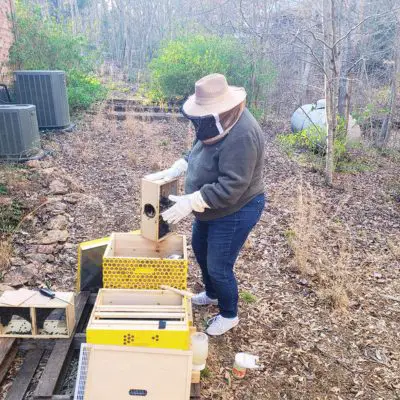
Now let’s dive into selecting the best time to inspect your beehive. So, before approaching hive inspection we have to consider a few things.
Things You Should Consider For Perfect Timing To Inspect Hive
For the best time to inspect a beehive, you should consider the following things.
- The Weather Condition: You should inspect your hive when the weather is sunny and clear. If there is too cold or disaster in the atmosphere, don’t think of inspecting the hive.
- Bees Mood: You can easily get to know about bee’s moods by observing them. During fall bees usually become very aggressive. If possible try to inspect less during this season.
- Swarming Behavior: It is common to see bees can take preparation for swarming. If you see your bees are about to swarm don’t inspect. If you see they are happy with their present home then you can inspect them.
- Foods: If there is a shortage of food, you can inspect them and provide food to them.
- Bees Outside The Hive: If you see bees coming out from the hive for pollination this means they are okay with the present environment. So, you can inspect them under such a situation.
- Type Of Bees You Have: Different types of honey bees need different inspection rules. Such as you can inspect Himalayan honey bees in both winter and warmer seasons. On the other hand, Western honey bees don’t like interruption during winter.
These are the major points you should consider while you are thinking of inspecting the hive. The perfect timing may vary depending on the type of bees and the current season. But there are some common things that indicate the best time to inspect a beehive. Those include:
- A certain range of temperature.
- Time of the day.
- Frequency of inspection.
What Is The Best Temperature For Hive Inspection?
You should inspect your hive on a warm day. It should be not too cold. The ideal temperature for hive inspection is between 16ºC to 30°C.
If you want a quick inspection you can do it even if the temperature is as low as 15°C. For long-duration inspection like mite treatment, the suitable temperature is above 18°C.
Too low a temperature is worse for bees. Because bees need to keep warm inside the hive. Also, high temperature means bees need to work more to ensure temperature regulation inside the hive.
This is why you should inspect the hive at not too low or not too high temperature. If it feels warm then you can inspect the hive.
When Is The Best Time Of Day To Check Bees?
You should inspect the hive during the day not at night. Also, peak the time of the day when it is sunny. The environment is not too cold or not too hot. The best time of the day to inspect a beehive is between the late morning to afternoon.
If I specifically talk about the time, it should be from 10 am to 11 am or from 3 pm to 5 pm during summer. In the case of winter or spring, the best time to inspect your beehive is at mid-day from 12 pm to 2 pm.
Also, during winter and spring make sure it is a sunny day and the temperature is within the limit. It is always preferred to avoid hive inspection when it is too cold.
In brief, the best time of the day to inspect a beehive is when it is sunny and warm.
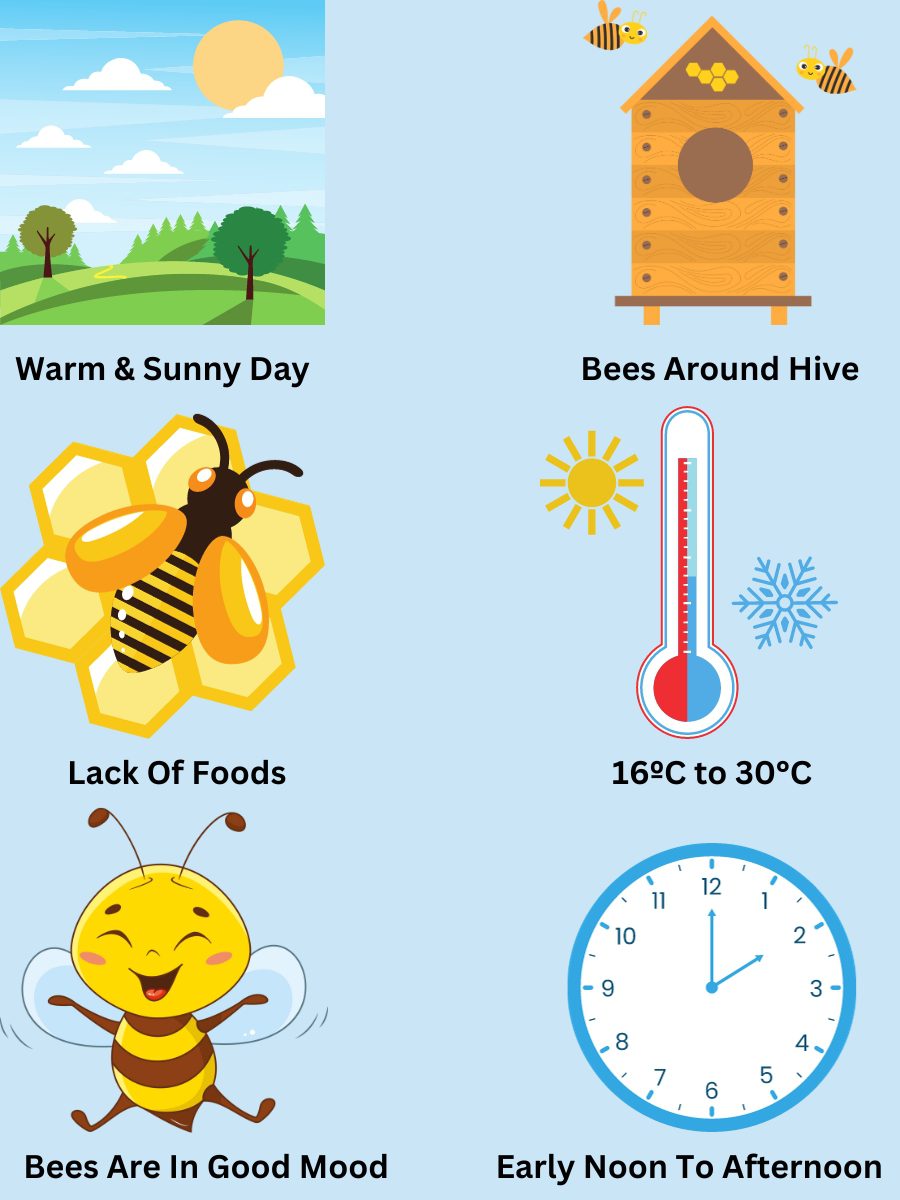
How Often Should You Inspect Your Beehive
The frequency of hive inspection varies depending on many factors. Those may include
- Current season.
- Type of bees you have.
- Hive population.
- Hive current conditions.
- The mood of bees.
- The place where you set your beehive.
In the beginning, when you just transfer your nuc to a beehive you may want to inspect more frequently. But keep in mind that first, you have to give bees time to accept their home. So, leave them at least for 2 weeks. Then you can inspect them again with an interval of 14 days.
- During spring and winter, bees may become aggressive. So, it is always preferred to inspect less during these seasons.
- You may have to inspect the hive more often when you see there is a growth of mites.
- During late spring and summer, you can inspect the hive almost every week. But try to only inspect when they need you.
- Whenever you see there is a lack of food you can inspect them and provide sugar syrup.
- If you see the hive is overcrowded you can inspect and split the hive when needed.
- During the fall bees are more aggressive so inspect less. But in case you see they need your help you can inspect them any time.
- If the hive becomes queenless leave them alone for a couple of weeks to select their new queen.
- For winterizing the beehive before winter you may need to inspect quite often.
In general, you have to maintain a minimum interval of 1 week between consecutive inspections. Bees don’t like interruption, so inspect only when they need your help.
When To Inspect Beehive During Winter
During winter most of the days are cold and windy. So, you should rarely inspect the hive.
If you winterize your beehive properly, then you may not even need to inspect the hive during the entire winter. In case your bees need your help, try to select a comparatively warmer day.
Make sure the day is sunny and the bees are nice and chill. Approach the hive at midday when the sun is just above the head. Don’t inspect for a long duration during winter.
How Should You Approach Hive Inspection
Actually, different beekeepers have different approaches to hive inspection. The approach is also different according to the present situation of the hive.
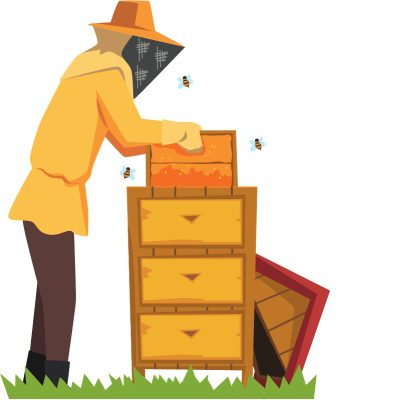
At the beginning of beekeeping, beekeepers may get stung very often. With time they know how to interact with bees. This is why expert beekeepers do not need protective gear for hive inspection. Because they know well how to inspect the hive and avoid getting stung by bees.
If you are a beekeeper you can follow my steps to approach hive inspection.
- Select The Timing: Choose the right timing for hive inspection. I already discussed the best timing for the hive inspection.
- Wear Protective Gear: You have to wear protective gear to cover your whole body to avoid being stung.
- Hive Tools: Take the necessary hive tools and especially take the bee smoker.
- Smoke The Entrance: Push smoke a couple of times at the hive entrance before opening. You should know how to use a bee smoker properly to calm them.
- Perform The Inspection: Then open the hive entrance and perform your desired inspection.
After completing the hive inspection make sure to sterilize your hive tools. Also, wash your suits and beekeeping gloves. Keep calm during inspection and don’t swat.
How Long To Wait For First Hive Inspection?
When you just transferred the nuc to a hive you have to leave the bees alone. Because they need to accept the hive. In most cases, the queen comes in a cage. So, the worker needs some time to accept the queen too.
My personal preference is to wait at least 12 to 14 days for the first hive inspection. After 2 weeks check if everything is alright. If the queen is accepted, she will start laying eggs.
In case the queen is still inside the cage give them another week to accept her. When the worker accepts the queen and adapts to the hive, you are good to go for a natural hive inspection.
Frequently Asked Questions
Is late afternoon to early dusk the worst time to check hive?
The dark is obviously not suitable for most bees. For honey bees, it is always preferred to avoid hive inspection from late afternoon to early dusk. Because bees are not active during these times of the day.
Should I inspect a hive after a swarm?
If you just got the swarm in a beehive, it is important to look for the queen. So, after the swarm takes place, inspect to confirm if the swarm is Queen-right or not. Because without the queen the swarm is not going to stay.
Is it OK to inspect bee hives at night?
Your bees won't like the inspection at night. Bees are least active at night and they rest during night. So, it is preferred not to inspect them at night. For emergencies, you can perform quick inspections at night.
Final Thoughts About Right Timing For Hive Inspection
So the conclusion, the best time to inspect beehive is on a warm and sunny day. Also, the perfect timing for hive inspection varies depending on various factors that have already been discussed.
Remember bees don’t like too many interactions. So, avoid over-inspection. It doesn’t mean that don’t inspect them for long.
You should learn about your bees. Inspect them when they need your help. Spend more time around the beehive. Observe their activities.
Trust me with time you will automatically be able to select the best and perfect timing to inspect the beehive. You will be able to decide whether your bees need your help or not.
For beekeeping, it is really important to decide how many brood boxes to use for beehives. Also, you should choose the perfect dimension for the beehive entrance reducer.
By giving more attention and taking more care of bees you will be able to build a healthy colony. If bees are happy beekeepers like me are also happy. So, happy apiary!

